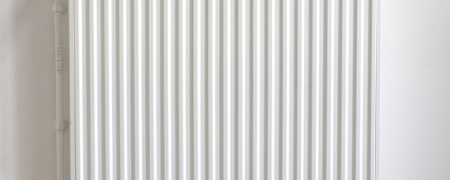Step-by-Step Installation Guide: Setting Up Your Electric Home Water Heater
Setting Up Your Electric Home Water Heater Installing an electric home water heater is a rewarding DIY project that brings comfort and convenience to your household. Whether you’re replacing an old unit or setting up a new electric water heater, this step-by-step installation guide will walk you through the process. By following these instructions carefully, you’ll ensure a safe and efficient installation, providing you with reliable hot water for years to come.
Before You Begin
Before diving into the installation process, gather the necessary tools and materials:
- New electric water heater
- Pipe wrench
- Adjustable wrench
- Screwdriver
- Pipe tape (Teflon tape)
- Pipe cutter or hacksaw
- Pipe fittings (if not included with the water heater)
- Flexible water supply lines
- Gas leak detection solution (if applicable)
- Safety gloves and goggles
Step 1: Turn Off Power and Water
Ensure safety by turning off the power supply to the water heater at the circuit breaker. Additionally, shut off the water supply to the existing water heater by closing the inlet and outlet valves.
Step 2: Drain the Old Water Heater
Connect a hose to the drain valve of the old water heater and place the other end in a drain or outside. Open the drain valve and the pressure relief valve to allow the water to flow out. Once drained, close both valves.
Step 3: Disconnect and Remove Old Water Heater
Using a pipe wrench, disconnect the water pipes from the old water heater. If it’s an electric unit, disconnect the wiring. Carefully remove the old water heater, taking precautions to avoid injury.
Step 4: Prepare the Installation Area
Place the new electric water heater in a suitable location, ensuring proper clearances for ventilation. Follow the manufacturer’s recommendations for placement and clearances. If installing indoors, ensure proper venting to prevent the accumulation of gases.
Step 5: Connect the Water Pipes
Using a pipe wrench, connect the water pipes to the water heater. Apply pipe tape to the threads for a secure and leak-free connection. Ensure proper alignment and tightness.
Step 6: Connect the Wiring
For electric water heaters, connect the wiring following the manufacturer’s instructions. This typically involves connecting the wires to the designated terminals on the water heater and securing them tightly.
Step 7: Install Pressure Relief Valve
Install a new pressure relief valve following the manufacturer’s specifications. This valve is crucial for maintaining the pressure within the water heater and preventing potential hazards.
Step 8: Turn On Water Supply
Open the water supply valves to allow water to fill the tank. Check for any leaks around the connections. If using flexible water supply lines, ensure they are properly secured.
Step 9: Turn On Power
Restore power to the water heater by switching on the circuit breaker. For gas water heaters, follow the manufacturer’s instructions for relighting the pilot light.
Step 10: Check for Leaks and Insulate Pipes
Inspect all connections for leaks. If there are no leaks, insulate the hot water pipes to improve energy efficiency and reduce heat loss during water transportation.
Step 11: Set the Temperature
Adjust the thermostat on the water heater to your desired temperature. Most manufacturers recommend a setting of around 120°F (49°C) for energy efficiency and safety.
Step 12: Flush the Tank
To remove any sediment or debris, flush the tank by opening the drain valve. Connect a hose to the drain valve and direct it to a suitable drainage location. After flushing, close the drain valve.
Step 13: Test the Water Heater
Turn on a hot water faucet to let air escape from the system. Once a steady flow of water is achieved, the water heater is ready for use.
Step 14: Conduct a System Check
Ensure all components are functioning correctly. Check for any unusual noises, leaks, or issues with the temperature. If you encounter problems, refer to the manufacturer’s manual or seek professional assistance.
Conclusion
Congratulations! You have successfully installed your electric home water heater. By following this step-by-step guide, you’ve not only ensured a safe and efficient installation but also set the stage for years of reliable hot water in your home. Enjoy the comfort and convenience of your new electric water heater.
Get Access Now
For more insights and recommendations on electric water heaters and DIY installation tips, visit Explore a curated selection of water heaters and resources to make informed decisions for your home.



Leave a Reply